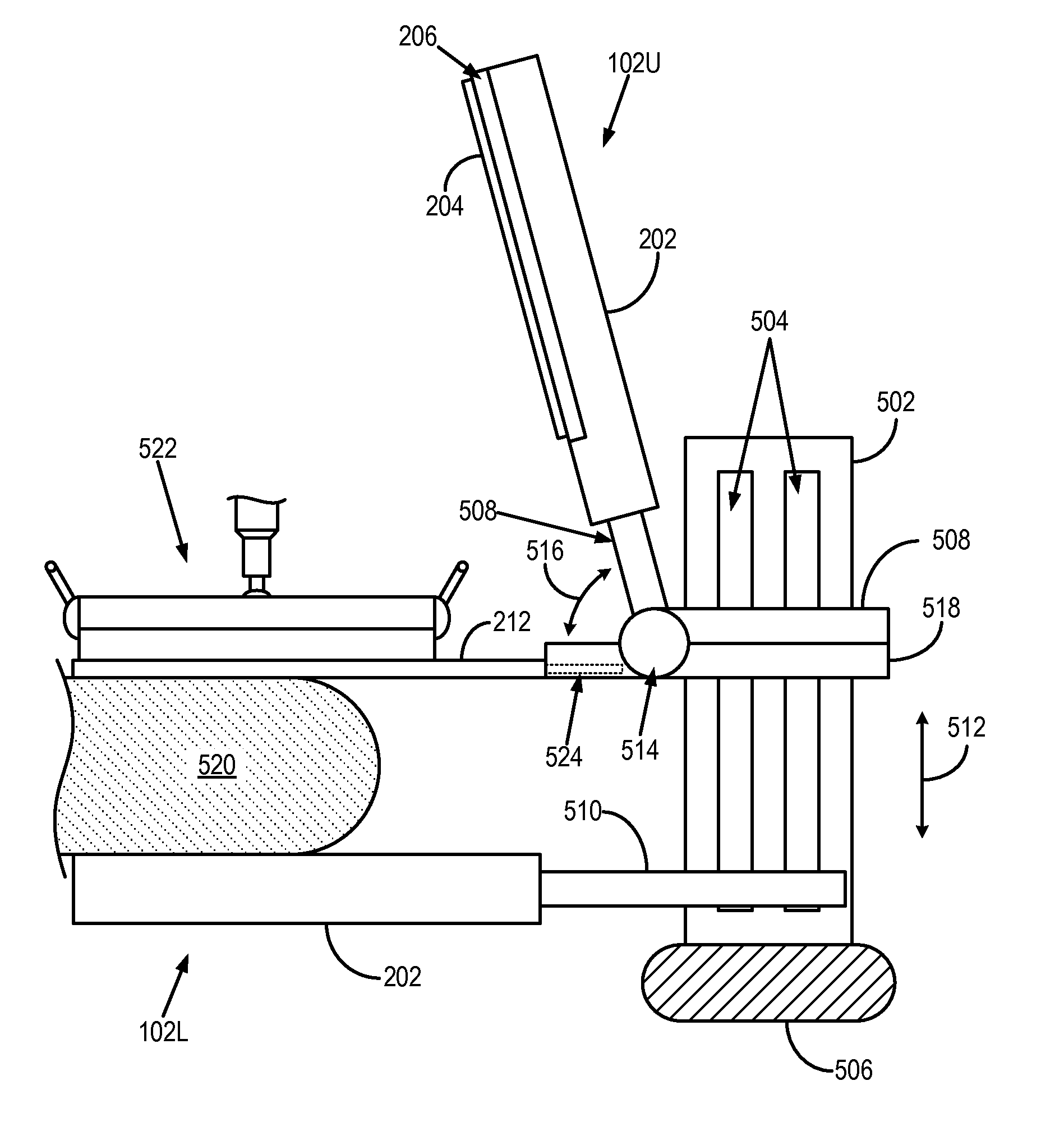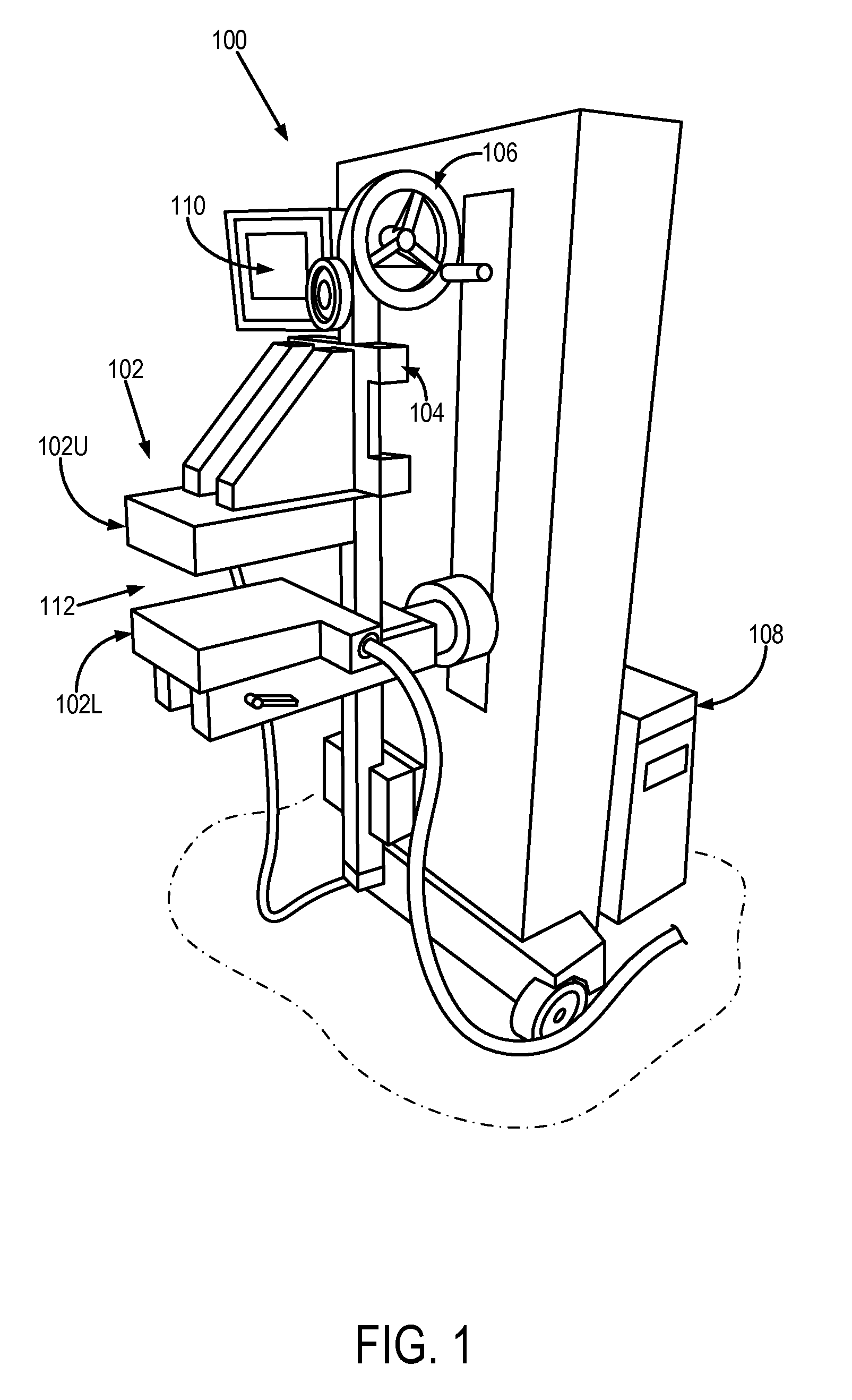Method and apparatus for dual-modality ultrasonic and nuclear emission mammography
a nuclear emission and ultrasonic technology, applied in the field of breast imaging, can solve the problems of reducing the sensitivity of mammography with increasing mammographic density, affecting the accuracy of mammography, and a less than perfect screening method of mammography
- Summary
- Abstract
- Description
- Claims
- Application Information
AI Technical Summary
Benefits of technology
Problems solved by technology
Method used
Image
Examples
Embodiment Construction
[0029]Current schemes for radio-guided breast biopsy are limited in their ability to incorporate additional information from x-ray or ultrasound imaging. Additionally, such schemed only provide a mechanism to localize a lesion and to perform biopsy, but do not provide any supplementary information about the lesion. Thus, the schemes developed for positron emission mammography (“PEM”) and breast specific gamma imaging (“BSGI”) only provide a conventional imaging scheme to localize a lesion, and neither of these systems incorporates any innovative features to enhance or accelerate the biopsy process. With typical imaging times for both PEM and BSGI at around ten minutes per view, the biopsy process can become a lengthy procedure depending on how many images need to be acquired to confirm correct placement of the biopsy needle.
[0030]The MBI system of the present invention provides anatomical correlation information, which is very helpful for aiding a clinician in the decision making pr...
PUM
 Login to View More
Login to View More Abstract
Description
Claims
Application Information
 Login to View More
Login to View More - R&D
- Intellectual Property
- Life Sciences
- Materials
- Tech Scout
- Unparalleled Data Quality
- Higher Quality Content
- 60% Fewer Hallucinations
Browse by: Latest US Patents, China's latest patents, Technical Efficacy Thesaurus, Application Domain, Technology Topic, Popular Technical Reports.
© 2025 PatSnap. All rights reserved.Legal|Privacy policy|Modern Slavery Act Transparency Statement|Sitemap|About US| Contact US: help@patsnap.com



